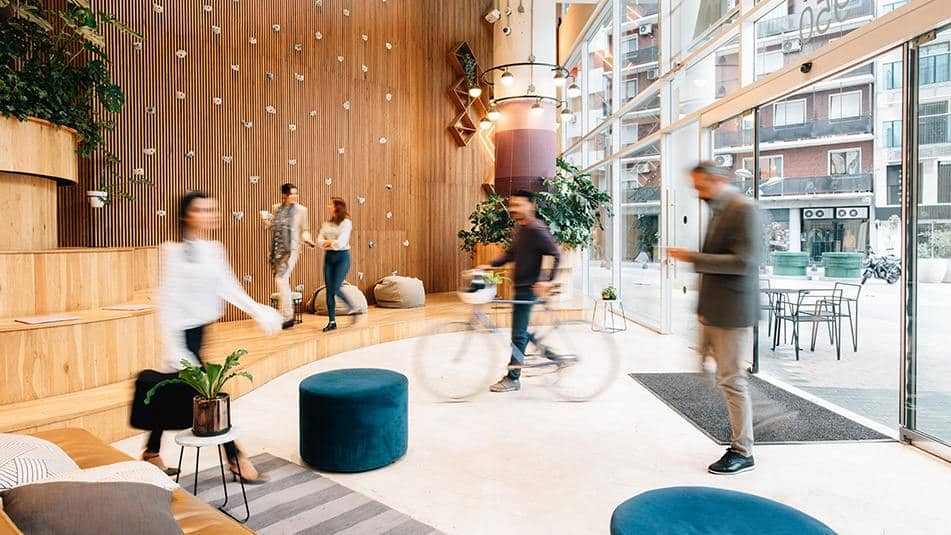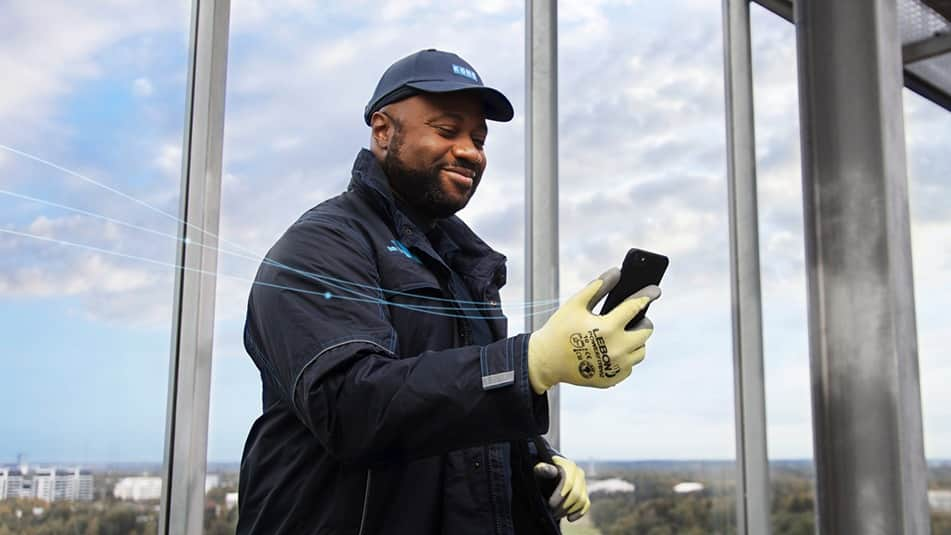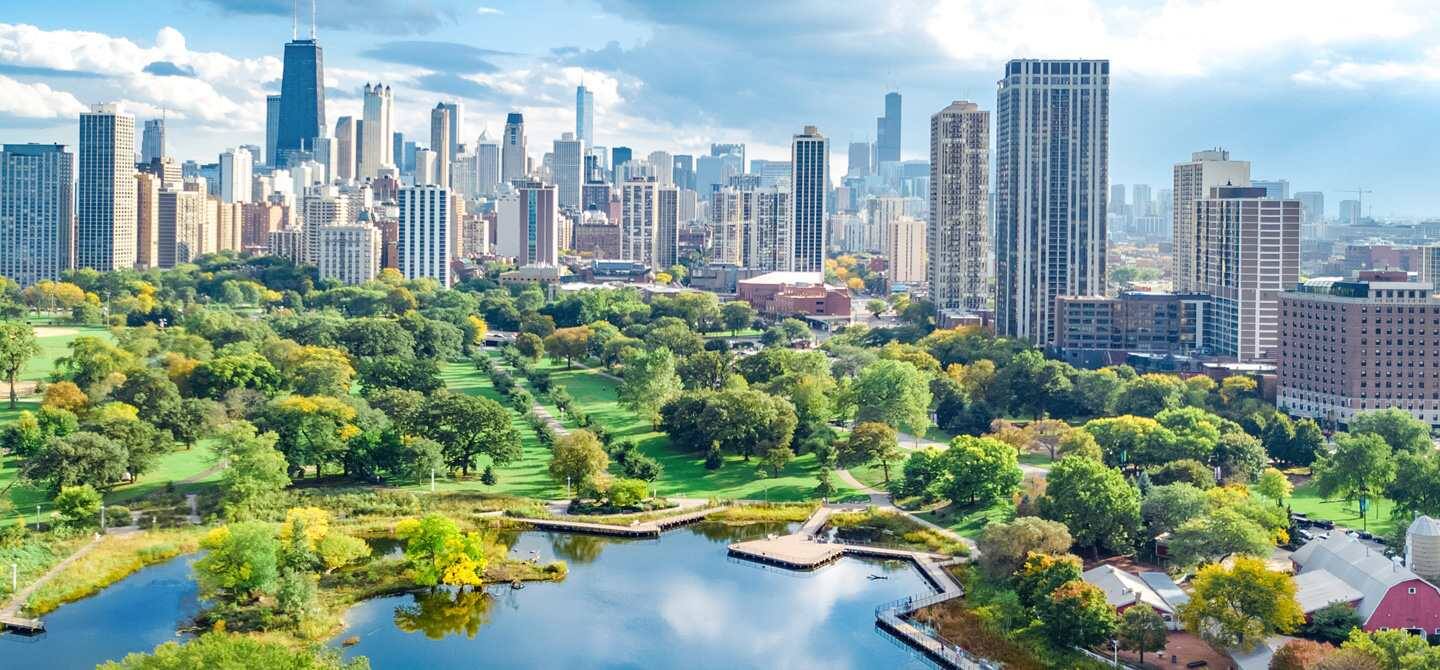Are you interested in KONE as a corporate business or a career opportunity?
Corporate site16 June 2022
It’s common these days to talk about the challenges that our cities must face, not least the climate emergency and a rapidly growing urban population. But how about the importance of making sure our buildings also have a human side?
Celebrated British designer Thomas Heatherwick, the founder of Heatherwick Studio, told the KONE Experience 2022 event that a truly sustainable building must not only mitigate climate impacts and be resilient, it must also serve humanity.
“It’s not enough for buildings to just be green if they all look and feel the same,” Heatherwick said.
“Buildings need a visual complexity and personality to make them more human.” That means creating future buildings that address all the important aspects of sustainability, but with the addition of emotional intelligence and a sense of place.
Sustainable construction was high on the agenda at KONE Experience, which brought together industry thought leaders with KONE customers, employees and partners. A key discussion was how sustainable cities of the future will look, and experts focused on three main drivers – the climate crisis, digital technology, and designing with people in mind.
With our global population heading towards 10 billion by 2050 and a majority flowing to cities, the world urgently needs to speed up the building and upgrading of infrastructure. At the same time, city planners must contend with resource shortages, the increasing impacts of climate change and the pressures of huge population growth.
Furthermore, the construction and operation of buildings already accounts for a sizeable 38% of total global carbon emissions, piling additional pressure on developers and planners to build in ways that mitigate and adapt to the new climate reality.
To cope with all this, widely acclaimed architect and urban planner Dr. Koon Hean Cheong explained that a sustainable transition would not be without tension and cost, and that governments will need a long-term view to move the needle on positive change.
“This is so we can understand all the trade-offs that will be needed along the way, as well as how to prioritize resources,” she explained. “Governments as big buyers and procurers can play an important role in getting us there,” said Cheong, underscoring the role of public-private partnerships as well as an overarching focus on human outcomes like health welfare and livability.

Human-centered digitization
Responsible digitalization is a case in point. “The places that work are the ones that focus on experience and where digital technology plays a role,” said Innovation Director Matt Gough of global construction specialist Mace. That means captured data should not only serve private enterprise but be put to people’s own advantage.
KONE understands this. With more than a billion people per day riding a KONE elevator or escalator around the world, KONE is already analyzing elevator-usage data to inform sustainable building planning, and to help people move through and among buildings more safely, efficiently, and with greater accessibility. These kinds of digital solutions help business by serving the physical landscape and, most importantly, give people peace of mind as they move through their day.

KONE as a sustainability partner
As a pioneer in energy efficiency, green building and carbon neutrality, KONE’s sustainability approach is very much in line with the views expressed by the panelists. So, whether it’s connectivity, green architecture, new energy systems, or designing for people, the company is already well positioned as an industry partner in sustainability.
“We’re here to help you meet your sustainability objectives during the entire life cycle of a building,” KONE’s Head of Global Offering, Maintenance Business, Anna Wäck told customers and stakeholders at the event. "And KONE’s approach to sustainability represents what is good for people, business and society at large."
KONE is now offering the industry's first carbon neutral KONE DX Class elevators and corresponding carbon-neutral maintenance service, KONE Care™ DX, which helps keep the elevator running at its full potential. This has been achieved with a three-step reduce-measure-compensate approach: first, measuring the emissions of the equipment and services; second, defining ongoing emission-reduction actions, for example, related to materials, manufacturing, logistics, maintenance visits, and spare parts; and finally, compensating for the remaining emissions to reach carbon neutrality.

Designing for the environment
Efficient elevators are central to making cities more sustainable, given that elevators account for between 2% and 10% of building energy use. KONE has been actively designing for the environment for years, with the current machine-room-less volume elevator, KONE MonoSpace® 500, now estimated to be 90% more energy efficient than its 1990s counterpart. In advanced materials, many of KONE’s elevators, escalators, and autowalks have already been recognized internationally for their high energy-efficient performance. The super-light carbon fiber KONE UltraRope® hoisting technology - much lighter than conventional steel rope - is one example which enables significant energy reductions during use.
Among eco-friendly materials, wooden construction is a growing trend that brings environmental benefits, not least in wood’s ability to store carbon from the atmosphere. That’s why KONE has developed expertise that is compatible with wooden buildings and wooden elevator shafts. “We are seeing more and more demand for wooden shafts in our order books,” said Jeroen Beerentemfel, KONE Netherlands Region East & NEB Director, who worked on the new Hotel Jakarta, Amsterdam. An all-wood structure with 200 luxury rooms and suites, powered by off-grid solar panels, the hotel is one of the first energy-neutral hotels in the Netherlands, and includes three KONE DX Class elevators installed into wooden elevator shafts.
Projects like this landmark monument to natural wood carry what the industry defines as strong green credentials, as well as what Heatherwick refers to as ‘the modest cathedral approach’, in that “they carry a human premium that visitors and guests who enter the space can cherish.”

